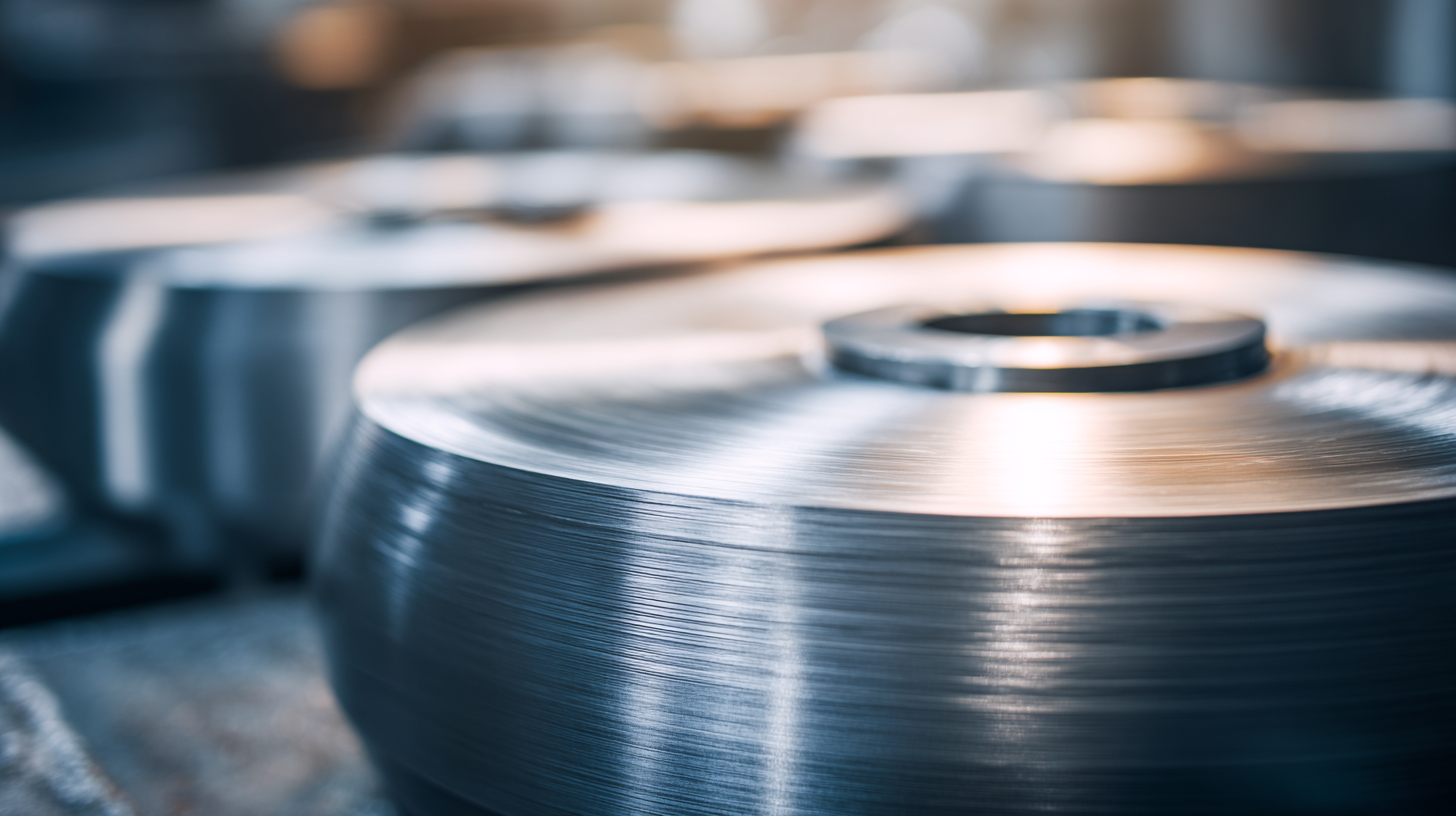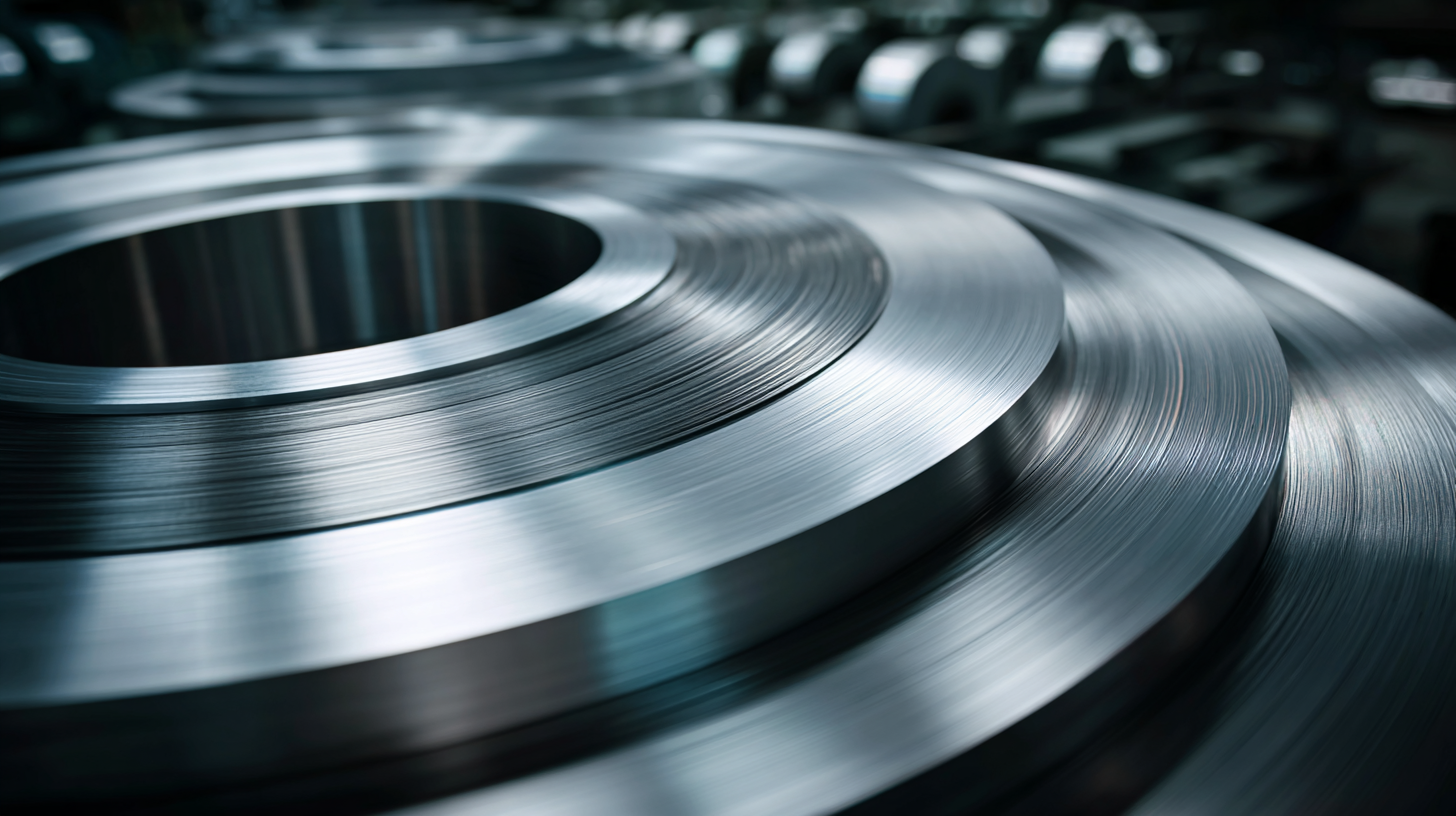Leave Your Message
In recent years, the manufacturing sector has seen a significant shift towards enhanced efficiency and performance, with spinning metal discs emerging as a pivotal technology driving these advancements. According to a report by *McKinsey*, the integration of high-performance spinning metal discs has led to efficiency gains of up to 25% in various industrial applications, particularly in energy generation and material processing. This remarkable improvement not only optimizes production workflows but also significantly reduces operational costs and environmental impact, making these components indispensable in modern industrial systems.
As industries face increasing pressure to innovate and reduce waste, spinning metal discs provide a viable solution. The *International Energy Agency (IEA)* highlights that adopting advanced materials and technologies, such as spinning metal discs, can lead to a decrease in energy consumption by up to 15%, further underscoring their role in achieving sustainability goals. These discs enhance performance in applications ranging from flywheels for energy storage to automotive components, showcasing their versatility and importance across various sectors. Ultimately, the evolution of industrial technologies solidifies the necessity of spinning metal discs for companies striving to remain competitive in an ever-evolving marketplace.

Spinning metal discs play a crucial role in modern industry, particularly in applications such as manufacturing, aerospace, and automotive sectors. These discs enhance efficiency and performance, demonstrating the power of rotational dynamics in practical applications. According to the International Journal of Advanced Manufacturing Technology, incorporating high-precision spinning metal discs has resulted in efficiency gains of up to 25% in various industrial processes. This substantial improvement translates not only to higher productivity but also to reduced energy consumption, aligning with global sustainability initiatives.

However, optimizing the use of spinning metal discs requires careful consideration of design and material selection. For instance, utilizing lightweight materials, such as titanium or aluminum alloys, can further increase efficiency while maintaining structural integrity. Tips for improving performance include regularly monitoring vibration levels during operation to detect any potential issues early and ensuring that the discs are manufactured to the highest tolerances to minimize wear and tear.
Incorporating technology, such as computer-aided design (CAD) and advanced machining techniques, can also lead to better outcomes. As noted by the American Society of Mechanical Engineers, the use of advanced simulations can help predict performance and streamline the manufacturing process, ensuring that spinning metal discs perform optimally in demanding industrial environments. Embracing these strategies not only enhances efficiency but also reinforces commitment to innovation within the industry.
The mechanisms of efficiency improvement through spinning metal discs are gaining significant attention, particularly in industrial applications. Recent advancements highlight the use of innovative devices like counter-rotating disc reactors, which enhance photocatalytic degradation of pollutants in wastewater treatment. By generating a dynamic flow that increases the interaction of contaminants with photocatalysts, these reactors can significantly improve the degradation rates of harmful dyes, showcasing the potential of spinning discs in environmental applications.
Moreover, the design of airflow-rotating disc separation devices exemplifies how optimizing disc configurations can enhance separation efficiency in agricultural processes. By integrating air suction mechanisms with curved rotating discs, these devices can effectively separate film fragments, proving the versatility and utility of spinning discs in various industrial contexts. This trend towards incorporating advanced disc technology not only boosts efficiency but also expands the range of applications, from wastewater treatment to agricultural processing, underlining the essential role that spinning metal discs play in achieving operational excellence.
Spinning metal technology has transformed a variety of industrial applications, leading to significant efficiency gains. According to a report by the International Journal of Advanced Manufacturing Technology, industries adopting spinning technology have experienced efficiency improvements of up to 25%. This is particularly evident in sectors such as aerospace, automotive, and energy, where precision and material strength are crucial. For example, in the aerospace industry, spinning metal discs are utilized to create lightweight yet durable components that meet stringent safety standards while minimizing material waste.

In addition to aerospace, the energy sector has seen remarkable advancements through the use of spinning metal technology. A study conducted by the U.S. Department of Energy highlighted that spinning metal discs are integral in turbine manufacturing, which has boosted power generation efficiency by 15%. Furthermore, the automotive industry is leveraging this technology to produce high-performance parts, enhancing vehicle efficiency and reducing emissions. The speed and efficiency of spinning metal processes are driving innovation and cost reduction, proving essential for modern manufacturing paradigms.
In various industrial applications, spinning metal discs have emerged as a game-changer, consistently demonstrating efficiency gains of up to 25%. Case studies reveal that these discs improve processes in sectors such as manufacturing, energy, and automotive. For instance, a study within the manufacturing sector showcased how integrating spinning discs in the assembly line reduced cycle times and minimized energy consumption, leading to substantial cost savings. Additionally, in the energy sector, spinning metal discs utilized in turbines have improved energy capture, translating to better overall performance and lower operational costs.
**Tips**: To maximize efficiency with spinning metal discs, consider regular maintenance schedules to ensure optimal performance. Furthermore, invest in quality testing and calibration equipment to fine-tune the operational settings, which can lead to even greater efficiency improvements. It's advisable to explore different materials and designs for spinning discs to find the best fit for your specific industrial needs.
Another compelling case study comes from the automotive industry, where the implementation of these discs in processing systems resulted in a reduction of waste materials and enhanced output quality. Companies reported a significant increase in production rates, paving the way for just-in-time manufacturing strategies.
**Tips**: Collaborate with engineering teams to innovate on disc designs that cater to specific production challenges. Continuous feedback from operators can also provide essential insights into operational effectiveness, driving further enhancements in efficiency.
| Application | Efficiency Gain (%) | Energy Consumption (kWh) | Output (Units/Hour) | Cost Savings ($) |
|---|---|---|---|---|
| CNC Machining | 25 | 200 | 150 | 5000 |
| Metal Stamping | 25 | 180 | 200 | 8000 |
| Rotary Kilns | 25 | 300 | 100 | 3000 |
| Injection Molding | 25 | 220 | 250 | 6000 |
Future innovations in spinning metal disc manufacturing techniques are poised to revolutionize industrial applications. As industries strive for greater efficiency and sustainability, the development of advanced manufacturing processes is key. Techniques such as additive manufacturing and advanced precision machining are being integrated into the production of these essential components. By leveraging these technologies, manufacturers can reduce material waste, enhance product quality, and improve overall manufacturing speed.
Additionally, the implementation of smart manufacturing technologies, such as IoT and AI-driven analytics, allows for real-time monitoring and optimization of the spinning process. This leads to reduced downtime and increased operational efficiency, which can result in significant cost savings. As companies continue to explore the potential of innovative spinning techniques, the future looks promising for achieving even greater efficiency gains in metal disc applications, ultimately driving progress across various industrial sectors.
